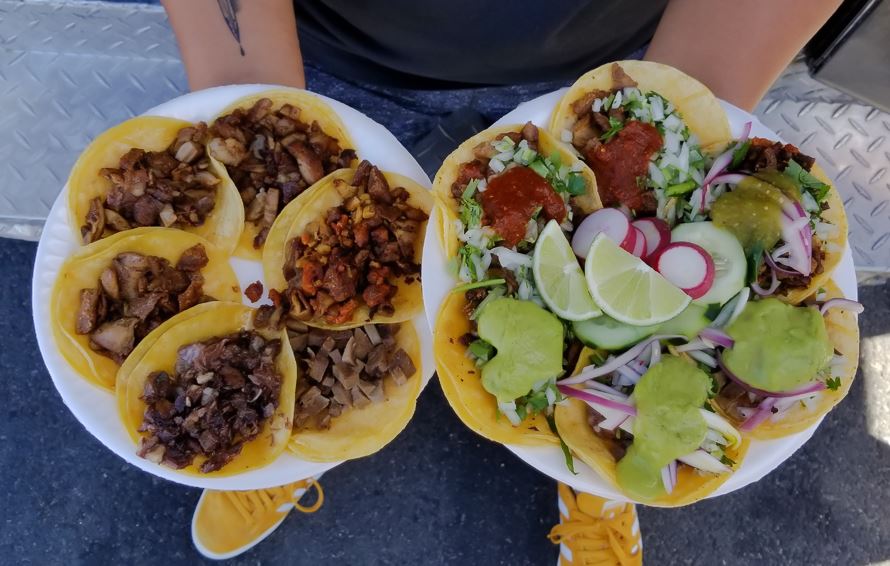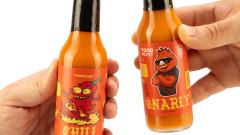Breaking Down 5 Taco Meats You’ve Seen But Never Tried

If you’re not terribly familiar with Mexican food and the different meats offered at taco trucks, the menu might look a little intimidating when you step up to the register.
It doesn’t help that a lot of these meats don’t sound super appealing when translated to English. For example, cabeza does mean head, but it’s not exactly what you’d expect.
I get it, carne asada (marinated steak) and pollo (chicken) are safe bets when you order your tacos. Hell, you might even trust carnitas thanks to Chipotle (who would have ever thought?).

We reached out to Angel Tamayo, owner of Tacos El Venado, one of the more successful taco trucks and stands in Los Angeles, as he offers 11 different kinds of meat, and puts love and care into all of them.
Tacos El Venado is a staple in the L.A. taco scene, and attracts people in droves, as hungry taco veterans know a good one when they see it.
Tamayo helped lay out some of the intricacies of each meat, so that you and I know exactly what we’re getting into. As you’ll soon learn, we’re getting into something tasty.
If you’re someone who’s deep in the taco game, you’re probably already keen to these meats, but this is for the guys and gals who want to take the next step from al pastor and asada.
I’m here to focus on some of the lesser-known meats that you see at taco spots, and give you a little insight on each, so you can make a more informative decision next time you’re at a taco stand and are feeling a little adventurous.
Cabeza

Cabeza is one of my personal favorite taco meats, as it is a tender cut that is typically braised, or steamed, then shredded.
Yes, it is the head of the cow, but that doesn’t mean you’re eating up eyeballs and skull fragments. Butchers will typically clean up the head for you, as with any part of the cow, basically letting you work with the meaty portions of the head. The head of the cow is actually very meaty and fatty, so when braised, it becomes fall apart tender.
Braised cabeza is arguably one of the softest taco meats, and has a supple mouthfeel to it.
Tamayo’s method of cooking cabeza is “al vapor,” or steamed, which yields similar tenderness, but is not quite as delicate to the bite as when braised.
Not that you’re counting calories when eating tacos or anything, but it is a very heavy taco, if not the heaviest of the bunch.
Suadero

Suadero is actually beef brisket, according to Tamayo. The meat comes from the lower chest of the cow, and offers a comparable mouthfeel to cabeza.
It is also a fatty piece of meat, which makes sense if you’re familiar with brisket. It’s a good kind of fatty though. Think of it as a tasty kind of richness that’s there on purpose, not just because someone was too lazy to trim the fat.
Suadero can be offered soft or crispy — but both are equally tasty — as the flavor isn’t compromised, either way.
Suadero isn’t offered at all taco trucks, but when you do see it on the menu, you definitely have to go for it.
Tripas

Beef tripe is kind of an uncommon meat in most taco meat selections, so I understand why someone would have reservations about it.
In layman’s terms, tripas are the lining of the cow’s stomach, and one of the chewiest meats taco trucks have to offer.
While it depends on preference, Tamayo says that most of his customers prefer that the tripas be crispy, so they are pan fried by default.
Sad to say, of all the meats on this list, tripas are the easiest to get wrong. Tripas need to be properly cleaned out and stripped of a good deal of fat. Because it is time consuming to clean it, some taco places don’t do it.

As you can see, tripas have an excess of fat that needs to be trimmed.
Tamayo stressed the importance of cleaning the tripas inside and out, as it makes the difference between a tasty taco, and a forgetful experience.
Honestly, for tripas, you have to have trust in the taquero, read Yelp reviews, or find out through word of mouth. If you’re not sure that the place does their tripas justice, don’t go for it.
If anything, Tamayo’s Tacos El Venado surely cleans them, so if you want to try tripas for the first time, that is one spot where you can start out.
It’s understandable that Tripas are probably one of the strangest meats on the list, and it’s not for everybody, but they’re worth the old college try. If clean and crisped up properly, they might end up being your new favorite.
Lengua

I think lengua is one that scares people the most, because they think they’re going to see Gene Simmons’s slimy tongue laid out on a tortilla. That’s not how tongue tacos work, though. The beef tongue skin is peeled and cleaned, so what you’re actually getting a is a tender meat that’s been marinated and diced.
You might be sensing a trend with the meats on this list, as a lot of them are tender. If you’re into melt-in-your-mouth meats, you’ve been blowing it by sticking with carne asada all your life.
Lengua is another beef that is typically steamed or braised according to Tamayo.
You’re for sure doing yourself a favor by getting a lengua burrito next time you go to a taco truck.
Buche

Buche, like tripas, is also stomach, except it’s pork not beef. It is typically cooked in lard, and slow-cooked up to two hours.
While probably not as chewy as tripas, it is still chewier than most taco meats, and that’s just something you have to be OK with.
Buche is also a lot simpler than tripas, as it does not take an arduous amount of cleaning, but still requires patience in its cooking, to ensure it is tender and ready to be dressed in a taco and salsa.
The texture is actually similar to cooked tofu, as it has a slightly toothsome chewiness to it. Unlike tofu, though, it’s a lot heavier, seeing how it was steeped in fat for two hours.
__________
Hopefully this guide encourages you to try a new taco meat. Every part of the animal is fair game, and tastes good when cooked correctly. There’s a reason that these meats are popular in the taco scene, just make sure you’re going to a good taco spot that puts the TLC needed for a delicious taco.
Don’t be scurred.






















